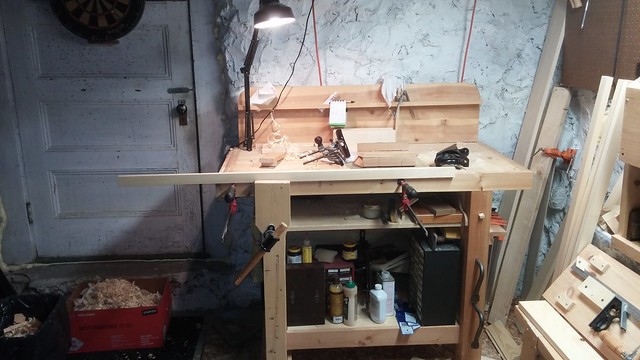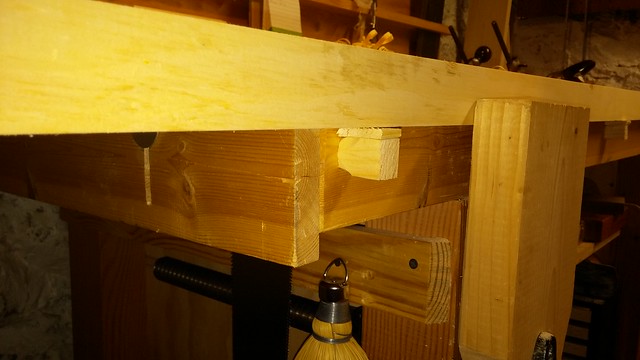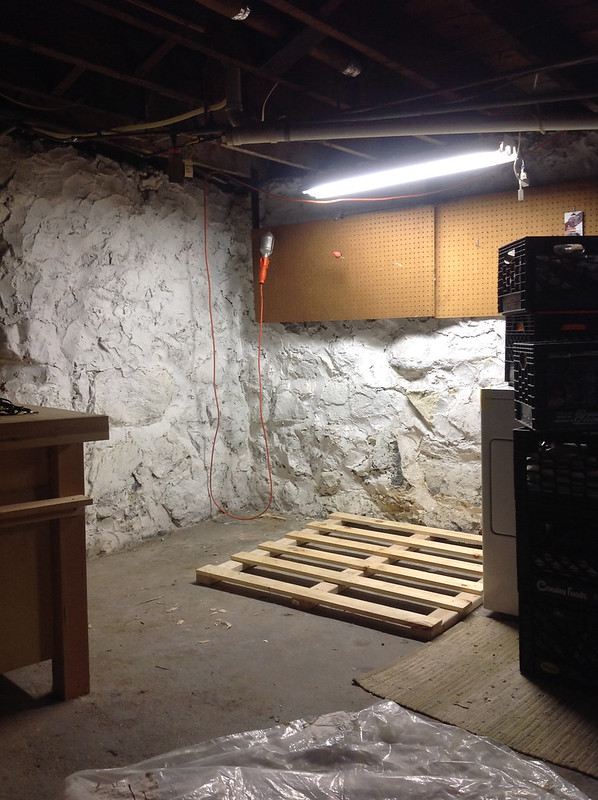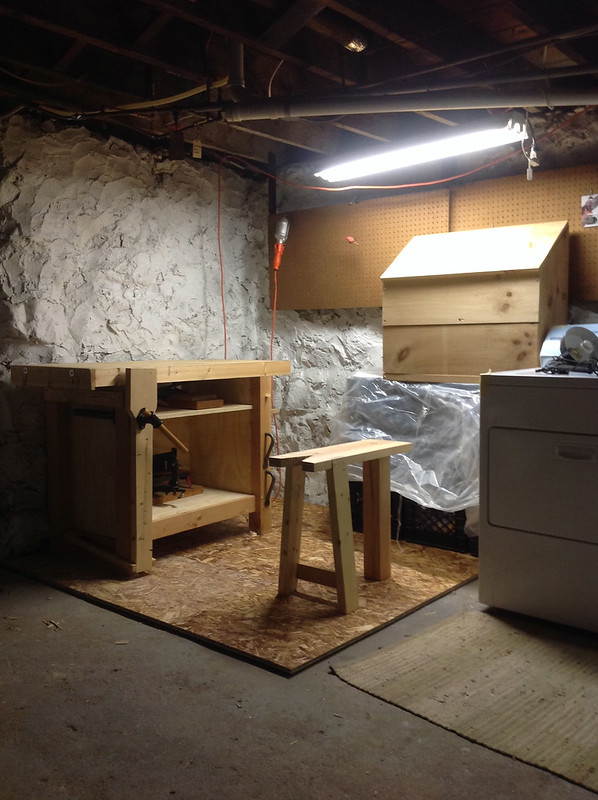UPDATE: Now there are photos!
As you should guess from the title, this is a review of some of the inexpensive hollow and round planes you can find at Lee Valley and other places. Overall, my experience has been fairly positive: in line with others in the CTR (Cheap Tool Review) line, I'll be fairly forgiving of minor problems.
One note: I'm using "hollow" to mean the body with a concave sole, and "round" to mean the one with a convex sole. I'm pretty sure that's right, but if it's not, at least you've had warning.
Where, and How Much?
The pair I got were a gift, and I'm not sure where they were purchased. Lee Valley carries them (
here), at $20 each, or $37 for the pair. Prices increase as size does: a set of 12 (six different sizes) is about $250. Japan Woodworker also has them, although as I write this it looks like they only have two sizes in stock.
What do you get, and What's the Construction Like?
Each plane ships in a cardboard box containing the plane body, iron, and wedge. In the case of my planes, the construction is reasonable. The body is some kind of hard wood (the site claims a type of rosewood), and is well finished on the outside. The inside of the mouth is rough, especially on the front: the bedding surface is better, but still not polished smooth like the outside is. That seems to be the philosophy behind these planes: where your hand will touch it, or where it touches the work, make it perfect. Everything else can go hang.
The wedge, in mine, fits well: it slides into place easily, can be tapped tight fairly simply, and (mostly) directs shavings where they need to go.
The iron, similarly, is reasonably well shaped (better on the hollow than the round), but fairly rough everywhere except the final inch or so. Since that's what's necessary for it to work, I don't really have a problem with that.
One final note: these things are tiny. Miniscule. "Don't sneeze, they'll blow away with the shavings" small. Lee Valley claims they're around six and a quarter inches long, which I might believe, but they seem smaller.
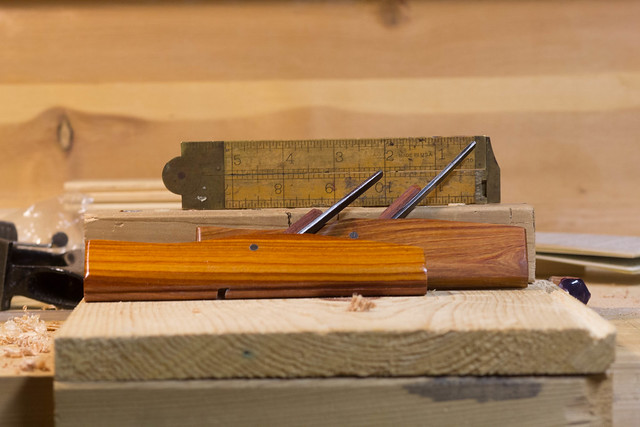 |
| Tiny, I tell you! |
How do they work?
I'm going to start with a disclaimer here: these are the first hollow and round I've ever used. In fact, rabbet and plow planes excluded, these are the first moulding planes I've ever used. My review, therefore, is not informed from experience with dozens of planes. It's based purely on the out of the box performance with no real expectations.
Next, a note on usage. From what I've read, it's not really reasonable to just start cutting with a hollow or round. A round should have enough of a rabbet cut that the iron makes contact at two places initially, and the hollow should be starting in such a way that two corners in the wood contact the iron away from the points. Basically, use a rabbet or plow to take away as much material as possible, and only use the hollow or round to do the final shaping.
That said, how comfortable am I using them? Fairly. I tried a few tests.
Setup consisted of lapping the backs, then dropping them into the body and wedging them. Adjustment was done with a panel-beating mallet, and if I'm going to keep using these I'll need a smaller hammer.
First, a piece of 1x4 pine. Reasonably straight grained, very soft, and a cutoff I didn't need: it's about 6" long. For the round, I made the initial rabbet with my cheap "rosewood" rabbet plane (every time I resharpen it I like that plane more...). Figuring out how to adjust it took some doing, since lateral adjustment matters more (and is more difficult) than with my other wooden planes, but once I was done it worked fairly well. There's one quibble, but I'll discuss that in a moment. For the hollow, I used the same rabbet to chamfer an edge, and worked from there. Again, it worked pretty well.
So, what's the quibble? The mouth kept clogging. I don't know if I had the iron set wrong, if the wedge is shaped badly, or what, but the mouth doesn't clear as well as I'd like. I feel like this is a flaw in the design: a side-escapement plane should have less trouble, I think, because it's not trying to spit shavings up out of the top, past a pin. I'm really not sure, though.
Regardless, I ended up with a rather nice ogee profile in the edge of the board, about 1/2" wide.
The second test was in red oak, and that was a little rougher. On the one hand, they did, technically speaking, work, and they mostly left a smooth surface behind. On the other hand, there was some tear out, particularly at the ends of the boards, which was odd since I was running with the grain. I think having the irons at a higher angle might help, but the end result was acceptable. I suspect a lot of the problem was my lack of experience and odd grain in the oak, and better stock choice would help a lot.
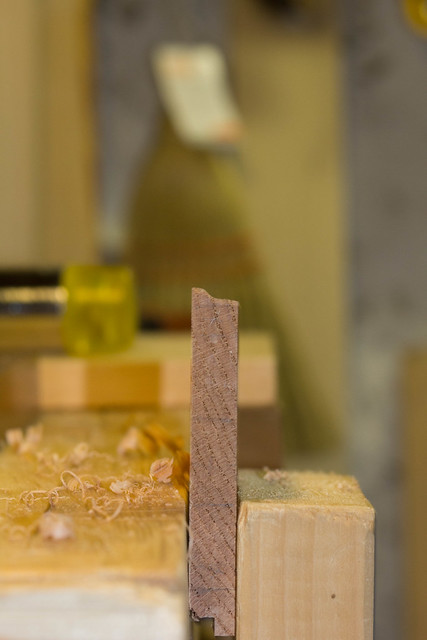 |
| Not bad, for a first attempt! |
Final Thoughts?
For thirty six dollars, these are hard to beat. Given that most companies selling hollow and round planes want $100+ for just one plane, it's probably impossible to beat. Even building your own, if you buy tapered irons you're going to spend more than $18/plane: a 1/4" iron from Lie Nielsen costs $15 before shipping right now, so unless you can buy your wood for less than $3 you're out of luck, costwise.
The quality is acceptable, if not fantastic, and I suspect that as I learn to use them they'll work better.
One final note is that there's an oddity to these planes, compared to Western ones. On a Western style round plane, the body is straight vertically on one side (usually) and tapered vertically on the other side. That means you can cut a fairly large part of the circumference of a circle with one. These planes have a flat on each side of the convex part, which limits what you can do with them. That's certainly not a dealbreaker, but it's something to consider.
Would I buy another?
This is an odd one. The answer is no, but not because I don't think they're worth it. As I said above, the price is unbeatable. The reason is that I acquired some nice maple, and Lie Nielsen started selling tapered moulding plane blanks, and I think it would be interesting to make my own. That way I can get a much larger range of sizes, and I can get the Western profile, which I prefer. But if you want a small set of hollows and rounds, and you don't have the money to buy new Western style or the patience to find and rehab old ones, these are a good choice.
